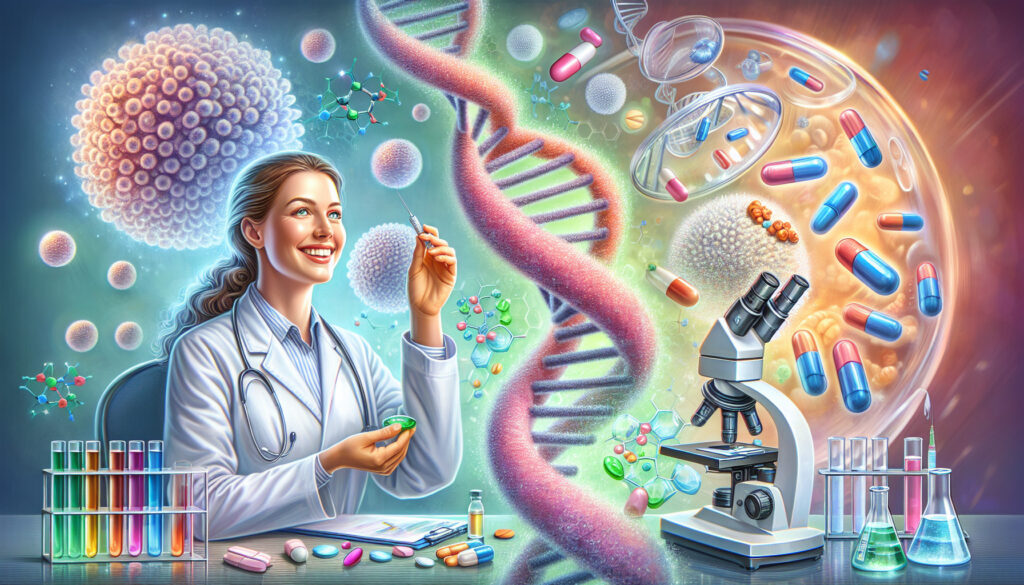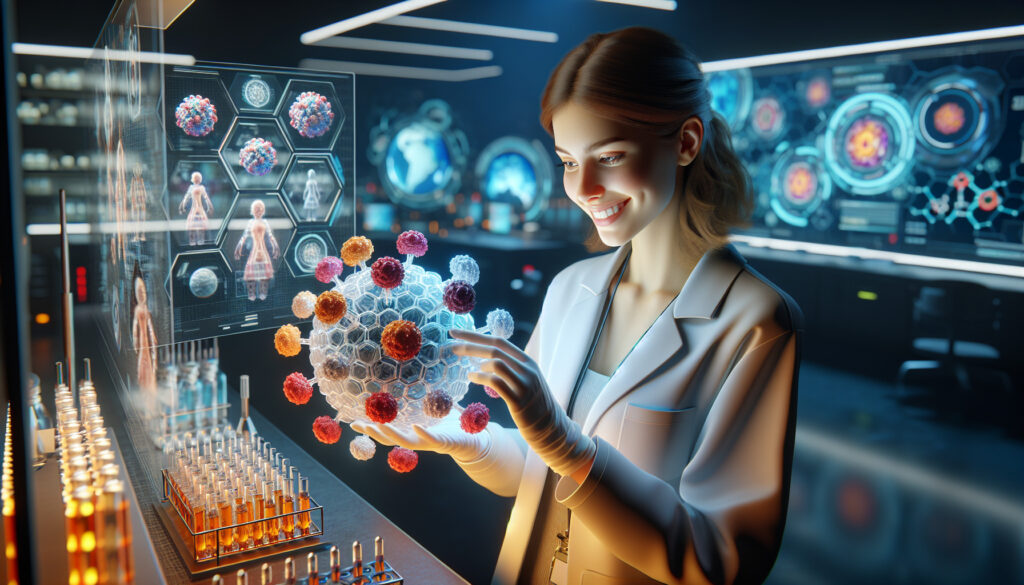
🦠 Ever wondered how a tiny jab can shield you from life-threatening diseases? Welcome to the fascinating world of vaccines! From eradicating smallpox to battling COVID-19, these medical marvels have been silently saving millions of lives for centuries. But how exactly do they work their magic?
In this eye-opening journey, we’ll unveil the secrets behind vaccines and answer the burning questions you’ve always had. Confused about the science? Worried about myths you’ve heard? 💉 Don’t fret! We’re here to arm you with knowledge and dispel the clouds of misinformation. Get ready to explore the 5 crucial aspects of vaccines that everyone should know:
Debunking widespread myths with cold, hard facts
What vaccines really are and why they matter
The brilliant science that makes them work
Common vaccines and their life-saving benefits
How vaccines are administered for maximum effect

Understanding Vaccines
A. What are vaccines?
Vaccines are biological preparations designed to stimulate the immune system and provide protection against specific infectious diseases. They contain either weakened or inactivated forms of pathogens, or components of these disease-causing organisms.
B. Importance of vaccination
Vaccination is crucial for:
- Preventing the spread of infectious diseases
- Reducing mortality rates
- Protecting vulnerable populations
- Eradicating diseases (e.g., smallpox)
- Saving healthcare costs
C. Types of vaccines
There are several types of vaccines, each with unique characteristics:
| Vaccine Type | Description | Examples |
|---|---|---|
| Live attenuated | Contain weakened forms of the pathogen | MMR, chickenpox |
| Inactivated | Use killed pathogens | Polio, hepatitis A |
| Subunit | Contain specific parts of the pathogen | Hepatitis B, HPV |
| Toxoid | Use inactivated toxins produced by bacteria | Tetanus, diphtheria |
| mRNA | Contain genetic instructions for producing antigens | COVID-19 vaccines |
D. How vaccines work in the body
Vaccines work by:
- Introducing harmless antigens to the immune system
- Stimulating the production of antibodies
- Creating memory cells for future protection
- Providing immunity without causing the actual disease
This process, known as active immunization, allows the body to recognize and fight off specific pathogens if exposed in the future. Now that we understand the basics of vaccines, let’s delve into the science behind their development and effectiveness.

The Science Behind Vaccines
Clinical Trials and Safety Measures
Clinical trials are crucial in ensuring vaccine safety and efficacy. These trials typically involve:
- Preclinical testing
- Phase I: Safety testing in small groups
- Phase II: Expanded safety and immunogenicity testing
- Phase III: Large-scale efficacy and safety studies
Safety measures continue even after vaccine approval through post-marketing surveillance.
Vaccine Development Process
The vaccine development process is rigorous and typically includes:
- Research and discovery
- Preclinical studies
- Clinical development
- Regulatory review and approval
- Manufacturing and quality control
- Distribution and post-market surveillance
| Stage | Description | Duration |
|---|---|---|
| Research | Identify antigens | 2-4 years |
| Preclinical | Lab and animal testing | 1-2 years |
| Clinical Trials | Human testing | 2-3 years |
| Approval | Regulatory review | 1-2 years |
Herd Immunity Explained
Herd immunity occurs when a significant portion of a population becomes immune to a disease, reducing its spread. This concept is vital for:
- Protecting vulnerable individuals
- Controlling outbreaks
- Potentially eliminating diseases
Antigens and Antibodies
Antigens are substances that trigger an immune response, while antibodies are proteins produced by the immune system to neutralize or destroy antigens. Vaccines work by:
- Introducing harmless antigens
- Stimulating antibody production
- Creating immune memory for future protection
Immune System Basics
The immune system is a complex network of cells, tissues, and organs that defend the body against pathogens. Key components include:
- White blood cells (lymphocytes)
- Antibodies
- Complement system
- Lymphatic system
Vaccines leverage this natural defense mechanism to provide long-lasting protection against specific diseases.
Now that we understand the science behind vaccines, let’s explore some common vaccines and their benefits.

Common Vaccines and Their Benefits
Now that we’ve explored the science behind vaccines, let’s delve into some common vaccines and their significant benefits. Understanding these can help you make informed decisions about your health and that of your loved ones.
A. Adult vaccines
Adult vaccines play a crucial role in maintaining health and preventing diseases throughout adulthood. Here are some key adult vaccines and their benefits:
- Tdap (Tetanus, Diphtheria, Pertussis): Protects against three potentially life-threatening bacterial diseases
- Shingles vaccine: Reduces the risk of developing shingles and its complications
- Pneumococcal vaccine: Prevents pneumonia and other pneumococcal diseases
B. Seasonal flu shots
Seasonal flu shots are an essential part of preventive healthcare. Here’s why they’re important:
| Benefit | Description |
|---|---|
| Reduced risk of flu | Lowers the chance of contracting influenza |
| Milder symptoms | If you do get the flu, symptoms are often less severe |
| Protection for others | Helps prevent spread to vulnerable populations |
C. Travel vaccines
When planning international travel, certain vaccines may be recommended or required:
- Yellow Fever vaccine: Mandatory for entry into some countries
- Typhoid vaccine: Recommended for travel to areas with poor sanitation
- Hepatitis A and B vaccines: Important for many international destinations
D. Childhood immunizations
Childhood immunizations are crucial for protecting children from various diseases. Some key vaccines include:
- MMR (Measles, Mumps, Rubella)
- Polio vaccine
- DTaP (Diphtheria, Tetanus, Pertussis)
- Varicella (Chickenpox) vaccine
These vaccines have dramatically reduced the incidence of many childhood diseases, saving countless lives and preventing serious complications.
With this understanding of common vaccines and their benefits, let’s move on to explore the process of vaccine administration and what you can expect when receiving a vaccine.

Vaccine Administration
Now that we understand the science behind vaccines and their benefits, let’s explore the practical aspects of vaccine administration.
A. Managing vaccine-related concerns
Many people have concerns about vaccines, which is natural. Healthcare providers play a crucial role in addressing these concerns:
- Listen actively to patients’ worries
- Provide clear, evidence-based information
- Offer resources for further reading
- Emphasize the importance of vaccines for individual and community health
B. Possible side effects
While vaccines are generally safe, some side effects may occur:
| Common Side Effects | Rare Side Effects |
|---|---|
| Soreness at injection site | Allergic reactions |
| Mild fever | Fainting |
| Fatigue | Seizures |
Most side effects are mild and resolve within a few days. Severe reactions are extremely rare.
C. Injection methods
Vaccines can be administered through various methods:
- Intramuscular (IM): Most common, injected into muscle tissue
- Subcutaneous (SC): Injected into fatty tissue beneath the skin
- Intradermal: Injected into the skin layer
- Oral: Taken by mouth (e.g., rotavirus vaccine)
- Nasal: Sprayed into the nose (e.g., flu vaccine)
D. Vaccination schedules
Vaccination schedules are carefully designed to provide optimal protection:
- Infants and children follow a specific schedule for maximum immunity
- Adults may need booster shots or additional vaccines based on age, health conditions, or travel plans
- Healthcare providers can help determine the appropriate schedule for each individual
With this understanding of vaccine administration, we can now move on to addressing common misconceptions and debunking vaccine myths.

Debunking Vaccine Myths
As we delve into the topic of vaccine myths, it’s crucial to separate fact from fiction and address common misconceptions that can lead to vaccine hesitancy.
Importance of reliable information sources
In the age of widespread misinformation, it’s essential to rely on credible sources for vaccine information. Here are some trusted sources:
- World Health Organization (WHO)
- Centers for Disease Control and Prevention (CDC)
- National Institutes of Health (NIH)
- Peer-reviewed scientific journals
Autism and vaccines: Setting the record straight
The claim that vaccines cause autism has been thoroughly debunked by numerous scientific studies. Here’s a breakdown of the facts:
| Myth | Reality |
|---|---|
| Vaccines cause autism | No scientific evidence supports this claim |
| MMR vaccine is linked to autism | Large-scale studies have found no connection |
| Thimerosal in vaccines causes autism | Thimerosal has been removed from childhood vaccines since 2001 |
The truth about vaccine ingredients
Vaccine ingredients are often misunderstood, leading to unfounded fears. Let’s examine some common ingredients:
- Adjuvants: Enhance immune response
- Preservatives: Prevent contamination
- Stabilizers: Maintain vaccine effectiveness
- Residual cell culture materials: Harmless traces from production process
Addressing common misconceptions
Now, let’s tackle some prevalent myths about vaccines:
- Myth: Natural immunity is better than vaccine-induced immunity
- Reality: Vaccines provide immunity without the risks of severe illness
- Myth: Vaccines contain harmful toxins
- Reality: Vaccine ingredients are safe in the amounts used
- Myth: Vaccines overwhelm the immune system
- Reality: The immune system can handle multiple vaccines
By understanding the facts behind these myths, we can make informed decisions about vaccination and contribute to public health. Next, we’ll explore the importance of staying up-to-date with vaccine recommendations and how to have productive conversations about vaccine safety.

Vaccines have revolutionized public health, protecting millions of lives from devastating diseases. From understanding their basic principles to exploring the science behind their development, we’ve covered the essential aspects of vaccination. We’ve also highlighted common vaccines and their benefits, discussed proper administration techniques, and addressed prevalent myths surrounding immunization.
As we move forward in an era of medical advancements, it’s crucial to recognize the importance of vaccines in maintaining individual and community health. By staying informed and up-to-date with vaccinations, we can contribute to a healthier, safer world for everyone. Remember, vaccines are not just about protecting ourselves, but also about safeguarding those around us who may be more vulnerable to diseases.

